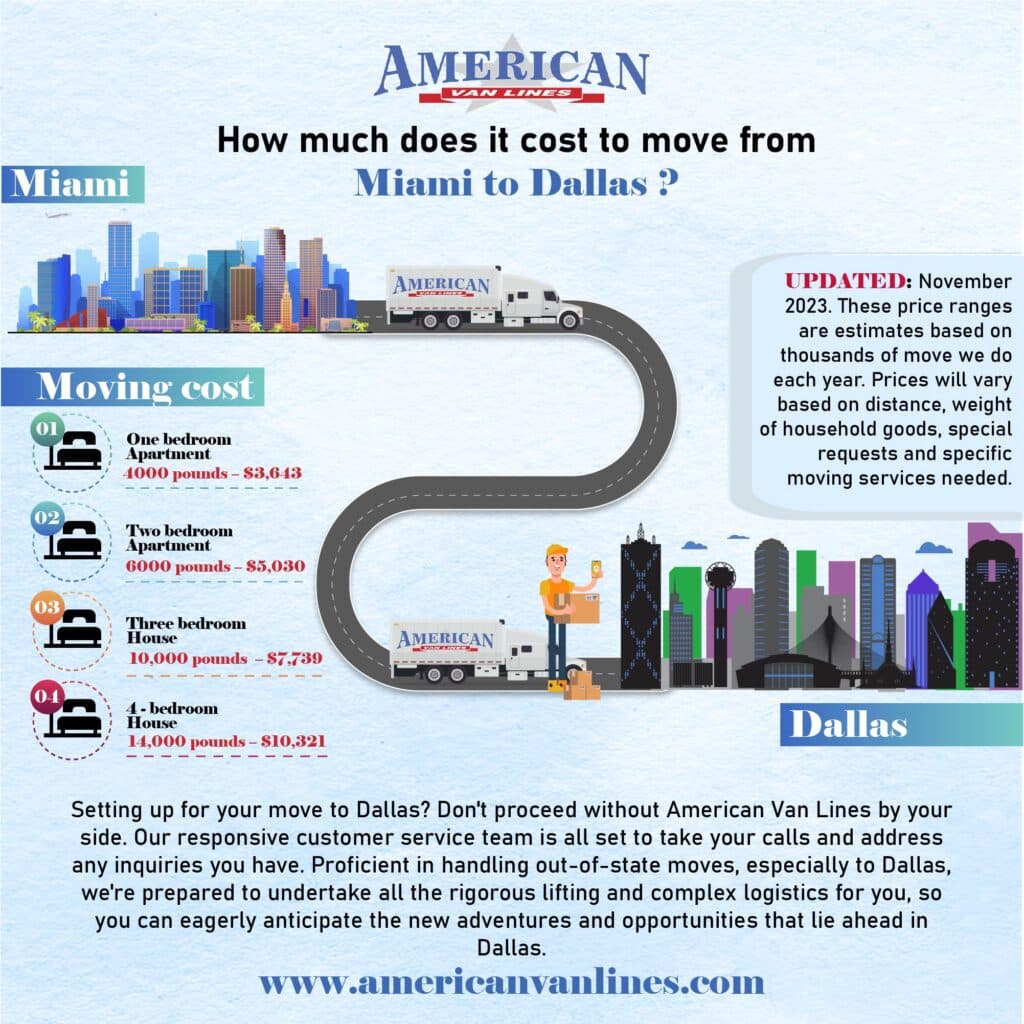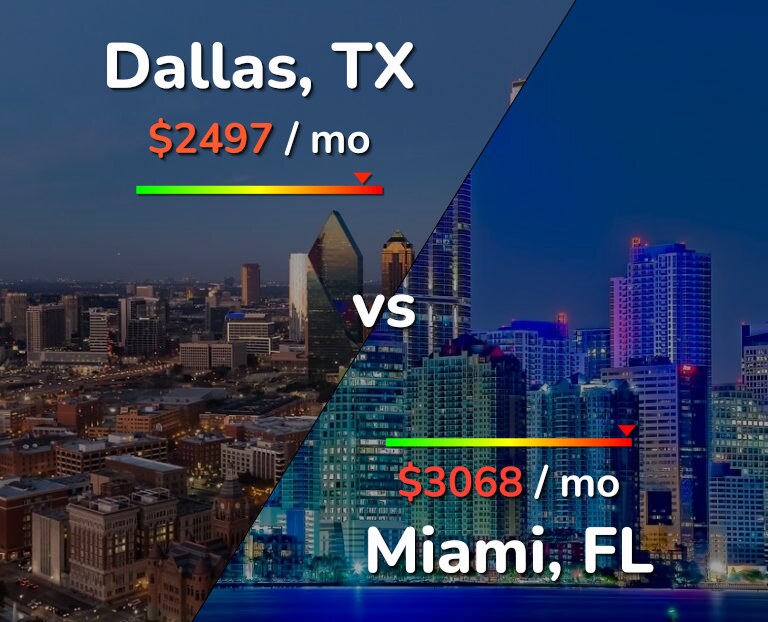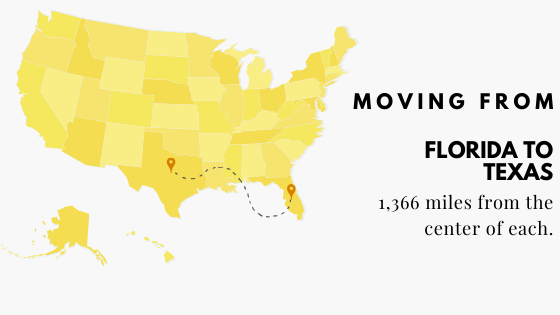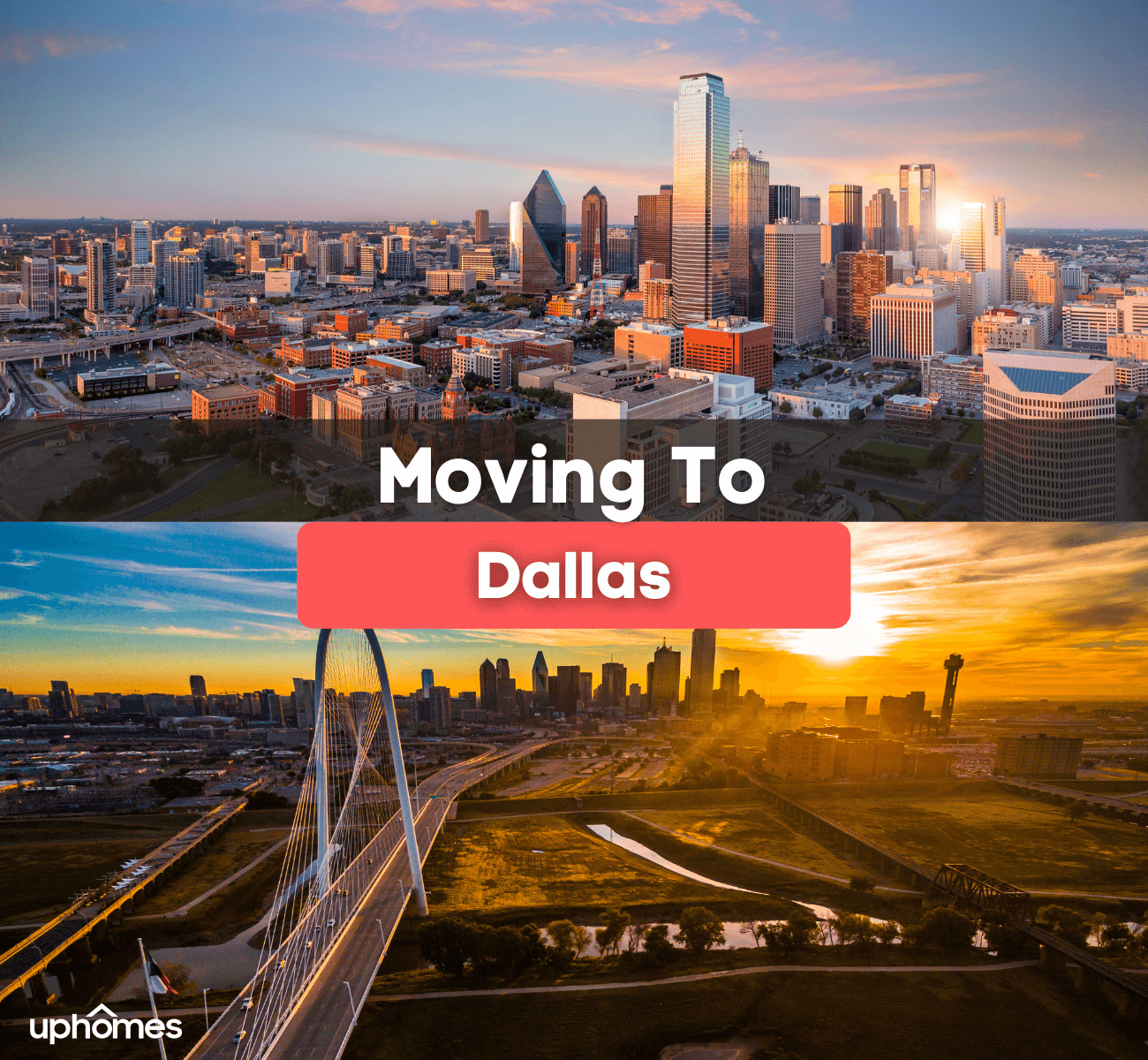Moving From Miami To Dallas
When considering a move from Miami to Dallas, it's essential to weigh the pros and cons of leaving behind the sun-kissed beaches and vibrant cultural scene of South Florida for the cowboy charm and thriving economy of North Texas. While Miami's diverse neighborhoods and tropical climate have their allure, Dallas offers a more affordable cost of living, a stronger job market, and a rich cultural heritage. As you prepare to make the transition, it's crucial to understand the differences between these two distinct cities and what to expect from your new life in Dallas.

- A New Chapter in the Lone Star State: Moving from Miami to Dallas
- How much does it cost to move from Miami to Dallas?
- Is it cheaper to live in Dallas or Miami?
- Is it worth moving from Florida to Texas?
- Is it a good idea to move to Dallas Texas?
- FAQ
- What are the main differences in cost of living between Miami and Dallas?
- How do I prepare for the cultural differences between Miami and Dallas?
- What are the job market and career opportunities like in Dallas compared to Miami?
- How do I navigate the transportation system in Dallas compared to Miami?
A New Chapter in the Lone Star State: Moving from Miami to Dallas
Are you considering leaving the vibrant city of Miami behind and starting a new chapter in Dallas, Texas? This move can be a significant change, but with the right mindset and preparation, you can thrive in the Lone Star State. Dallas offers a unique blend of cowboy culture, urban excitement, and business opportunities that make it an attractive destination for many.
Culture Shock: Adapting to the Dallas Lifestyle
Moving from Miami to Dallas means trading in the tropical climate and beachside vibes for a more laid-back, cowboy-inspired lifestyle. Dallas is known for its warm hospitality, but you may notice some cultural differences. For example, the pace of life is generally slower in Dallas, and people tend to be more friendly and welcoming. You may also need to adjust to a new dialect, as Texans have a distinct way of speaking that's different from the Miami accent.
Housing: Finding Your Dream Home in Dallas
When it comes to housing, Dallas offers a range of options to suit different budgets and lifestyles. From modern apartments in Uptown to family-friendly homes in the suburbs, you'll find plenty of choices. However, be prepared for a potentially higher cost of living in Dallas compared to Miami. The median home price in Dallas is around $340,000, which is higher than Miami's median home price of around $280,000.
Job Market: Career Opportunities in Dallas
Dallas is a hub for several industries, including technology, healthcare, and energy. The job market is thriving, with many major companies, including AT&T and ExxonMobil, calling Dallas home. If you're looking to switch careers or advance in your current field, Dallas offers plenty of opportunities. However, be prepared for a competitive job market, and make sure to network and build connections in your industry.
Transportation: Getting Around Dallas
Dallas is a car-friendly city, and having a vehicle can make it easier to get around. However, the city is also investing in public transportation, including the DART (Dallas Area Rapid Transit) system. If you prefer not to drive, you can use ride-sharing services or take advantage of the city's bike-share program. Be aware that traffic in Dallas can be heavy, especially during rush hour, so plan your commute accordingly.
Food Scene: Discovering Dallas' Culinary Delights
Dallas is known for its barbecue joints, but the city's food scene is more diverse than you might think. From Tex-Mex to Southern comfort food, you'll find a wide range of options to suit every taste and budget. Some popular spots include Pecan Lodge BBQ, The French Room, and El Come Taco. Be prepared to try some new flavors and dishes, and don't be afraid to ask locals for recommendations!
| Category | Miami | Dallas |
|---|---|---|
| Median Home Price | $280,000 | $340,000 |
| Cost of Living Index | 146.4 | 124.2 |
| Unemployment Rate | 3.2% | 3.4% |
| Average Temperature (°F) | 77.2 | 65.4 |
How much does it cost to move from Miami to Dallas?

The cost of moving from Miami to Dallas can vary greatly depending on several factors, including the distance, weight, and type of items being moved, as well as the services required. On average, a long-distance move from Miami to Dallas can cost anywhere from $2,000 to $5,000 or more.
Factors Affecting the Cost of Moving from Miami to Dallas
The cost of moving from Miami to Dallas is influenced by several factors, including:
- Distance and Fuel Costs: The distance between Miami and Dallas is approximately 1,170 miles, which can result in significant fuel costs.
- Weight and Volume of Items: The more items you need to move, the heavier and bulkier the shipment will be, increasing the cost.
- <strong Type of Move and Services Required: Whether you require a full-service move, packing services, or storage, each service will add to the overall cost.
Type of Moves and Their Associated Costs
The type of move you choose will significantly impact the overall cost. Here are some estimated costs for different types of moves:
- Container Moves: $2,000 to $3,500 (average cost for a 1-bedroom move)
- <strong_Truck Rentals: $1,500 to $3,000 (average cost for a 1-bedroom move, including fuel and equipment)
- <strong Full-Service Moves: $3,500 to $6,000 (average cost for a 1-bedroom move, including packing, loading, and transporting)
Additional Costs to Consider
In addition to the cost of the move itself, there are other expenses to consider:
- Packing Materials: $100 to $500 (depending on the quantity and type of materials needed)
- <strong Tolls and Parking Fees: $100 to $300 (depending on the route and parking requirements)
- <strong Travel and Accommodation Costs: $500 to $1,000 (if you need to travel to Dallas for the move)
Is it cheaper to live in Dallas or Miami?

The cost of living in Dallas and Miami can vary significantly, depending on factors such as housing, transportation, food, and lifestyle. Here's a breakdown of some of the key expenses to help you decide which city is cheaper to live in:
Housing Costs
When it comes to housing, Dallas is generally more affordable than Miami. The median home price in Dallas is around $240,000, while in Miami, it's around $340,000. Rentals are also cheaper in Dallas, with the average rent for a one-bedroom apartment being around $1,100 per month, compared to $1,800 in Miami.
Some key housing cost differences include:
- Median home price: Dallas ($240,000) vs. Miami ($340,000)
- Average rent for a 1-bedroom apartment: Dallas ($1,100/month) vs. Miami ($1,800/month)
- Property taxes: Dallas (2.3% average effective property tax rate) vs. Miami (1.2% average effective property tax rate)
Food and Transportation Costs
Food prices in Dallas and Miami are relatively similar, with some variations depending on the type of food and dining experience. However, transportation costs in Miami are generally higher due to the city's car-dependent culture and limited public transportation options.
Some key food and transportation cost differences include:
- Meal prices: Dallas ($15-20 average meal price) vs. Miami ($15-25 average meal price)
- Gas prices: Dallas ($2.20 average gas price) vs. Miami ($2.50 average gas price)
- Public transportation costs: Dallas ($96 monthly pass) vs. Miami ($110 monthly pass)
Taxes and Utilities
Taxes in Texas, where Dallas is located, are generally lower than in Florida, where Miami is located. Additionally, utility costs in Dallas are lower due to the city's more temperate climate.
Some key tax and utility cost differences include:
- State income tax rate: Dallas (0% state income tax rate) vs. Miami (0% state income tax rate, but with higher property taxes)
- Average electricity cost: Dallas (12 cents/kWh) vs. Miami (14 cents/kWh)
- Average water cost: Dallas ($40 monthly water bill) vs. Miami ($60 monthly water bill)
Is it worth moving from Florida to Texas?

Moving from Florida to Texas can be a significant decision, and it's essential to weigh the pros and cons before making a choice. Here are some points to consider:
Cost of Living
The cost of living in Texas is generally lower compared to Florida. Housing costs, in particular, are significantly lower in Texas. According to Zillow, the median home value in Texas is around $243,000, while in Florida, it's around $343,000. Additionally, Texas has no state income tax, which can result in significant savings for individuals and families.
- Texas has a lower overall cost of living index, with a score of 91.2 compared to Florida's 102.8.
- Housing costs are lower in Texas, with a median home value of $243,000 compared to Florida's $343,000.
- No state income tax in Texas means more money in your pocket.
Job Market and Economy
Texas has a thriving economy, with several major industries driving growth. The state is home to many Fortune 500 companies, and cities like Austin, Dallas, and Houston are hubs for technology, energy, and healthcare. Florida's economy, on the other hand, is heavily reliant on tourism, which can be seasonal and unpredictable.
- Texas is home to many major industries, including technology, energy, and healthcare.
- Several Fortune 500 companies are headquartered in Texas, including ExxonMobil, AT&T, and Valero Energy.
- The job market in Texas is more diversified, reducing reliance on a single industry.
Culture and Lifestyle
Florida and Texas have distinct cultural identities. Florida is known for its beach lifestyle, theme parks, and vibrant cities like Miami and Fort Lauderdale. Texas, on the other hand, is famous for its cowboy culture, BBQ joints, and a more laid-back atmosphere.
- Florida offers a beach lifestyle and access to theme parks, making it ideal for families and tourists.
- Texas is known for its cowboy culture and BBQ joints, offering a unique cultural experience.
- The pace of life in Texas is generally slower and more relaxed, which may appeal to those seeking a less hectic lifestyle.
Is it a good idea to move to Dallas Texas?

The question of whether it's a good idea to move to Dallas, Texas, is a complex one that depends on various factors. Here are some points to consider:
Pros of Moving to Dallas
Dallas is a thriving city with a strong economy, diverse culture, and plenty of opportunities. Here are some reasons why moving to Dallas might be a good idea:
Job market: Dallas has a booming job market, with many major companies, including AT&T, ExxonMobil, and American Airlines, headquartered there. The city is also home to a growing tech industry and a strong startup scene.
Affordability: The cost of living in Dallas is relatively low compared to other major cities in the United States. Housing, in particular, is affordable, with the median home price being around $240,000.
Cultural attractions: Dallas has a rich cultural scene, with numerous museums, galleries, and performance venues. The city is also home to the Dallas Cowboys (AT&T Stadium) and the Texas Rangers (Globe Life Park).
Cons of Moving to Dallas
While Dallas has many advantages, it's not without its drawbacks. Here are some potential downsides to consider:
Traffic and congestion: Dallas is known for its traffic and congestion, with some of the worst rush-hour traffic in the country.
Summer heat: Dallas summers can be brutal, with temperatures often reaching over 100°F (38°C) for days on end.
Crime rates: While overall crime rates in Dallas are decreasing, some neighborhoods still experience high levels of crime, particularly property crime.
Things to Consider Before Making a Decision
Before deciding whether to move to Dallas, here are some things to consider:
Research neighborhoods: With over 30 distinct neighborhoods in Dallas, it's essential to research and visit different areas to find the one that best fits your lifestyle and budget.
Weigh the pros and cons: Make a list of the advantages and disadvantages of moving to Dallas and weigh them against your personal priorities and goals.
Plan for transportation: If you don't have a car, consider the public transportation options in Dallas, including the DART (Dallas Area Rapid Transit) system.
FAQ
What are the main differences in cost of living between Miami and Dallas?
When moving from Miami to Dallas, one of the most significant changes you'll experience is the cost of living. Dallas has a lower cost of living compared to Miami, which means you'll be able to stretch your dollar further. For example, the average rent for a one-bedroom apartment in Miami is around $2,000 per month, whereas in Dallas, you can find a similar apartment for around $1,200 per month. Additionally, food prices are also lower in Dallas, with the average cost of a meal at a mid-range restaurant being around 15% less than in Miami. Overall, you can expect to save around 20-30% on your overall cost of living by making the move from Miami to Dallas.
How do I prepare for the cultural differences between Miami and Dallas?
Moving from Miami to Dallas can be a cultural shock, especially for those who are used to the vibrant, diverse atmosphere of Miami. Dallas, on the other hand, has a more laid-back, Texan vibe. To prepare, it's essential to research the local culture and customs of Dallas. For example, you'll find that Dallas is a more family-oriented city, with a strong emphasis on community and outdoor activities. Additionally, the food scene in Dallas is heavily influenced by Southern cuisine, which may be a departure from the Latin-inspired flavors of Miami. By understanding these cultural differences, you'll be better equipped to navigate your new surroundings and make the most of your experience in Dallas.
What are the job market and career opportunities like in Dallas compared to Miami?
If you're moving from Miami to Dallas for career opportunities, you'll be pleased to know that Dallas has a thriving job market. The city is home to many major corporations, including those in the tech, energy, and healthcare industries. In fact, Dallas has been named one of the best cities for jobs in the country, with a low unemployment rate and a high job growth rate. Compared to Miami, Dallas offers a more diverse range of industries, which can provide more career opportunities and professional development. Additionally, the cost of living in Dallas is lower, which means your salary can go further, giving you a higher quality of life.
If you're used to the public transportation system in Miami, you may find that Dallas is a bit more car-dependent. While Dallas does have a public transportation system, including buses and light rail, it's not as extensive as Miami's. However, the city is making efforts to improve its public transportation infrastructure, with plans to expand its light rail system and improve bus routes. To navigate the transportation system in Dallas, it's a good idea to research the different options available, including car-sharing services and ride-hailing apps. Additionally, you may want to consider investing in a car, especially if you plan to live in the suburbs or need to travel frequently for work.